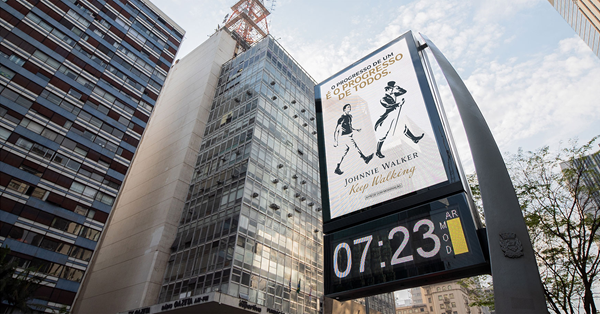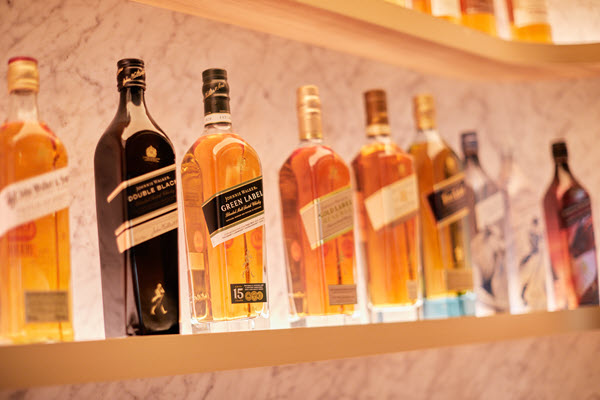Latin Heat: Scotch's South America Woes
Following a shock profit warning from Diageo, Scotch whisky distillers are facing up to a difficult period in one of the industry's key regions, Latin America. Richard Woodard finds out more for WhiskyInvestDirect…
Towards the end of September, Scotch whisky's largest operator, Diageo, released the most routine of trading updates: no change to the company's outlook for fiscal 2024 (the 12 months ending 30 June next year), it said. Nothing to see here, in other words.
Six weeks later, a (in corporate terms) dramatic development. Now, said Diageo, revenues and profits were set to take quite a hit thanks to a likely 20% reduction in first-half net sales in the Latin America & Caribbean (LAC) region.
LAC matters to Diageo because it's responsible for more than 10% of the multinational's annual revenues. It matters to Scotch because Diageo has a hugely dominant market position in the region, which is the source of about 30% of the company's global Scotch sales. Diageo has about three-quarters of the blended Scotch and premium-plus Scotch segments in LAC, so Johnnie Walker, Ballantine's, Black & White et al are big players here.

The company's announcement made for grim reading. "Macroeconomic pressures in the region are resulting in lower consumption and consumer downtrading," it said. "These impacts are slowing down progress in reducing channel inventory to appropriate levels for the current environment."
Sift through the corporate jargon and what you have is this: while people are drinking less Scotch, there's still plenty of it sitting in warehouses across Brazil, Mexico and the rest of the region. And, because even a company of Diageo's size doesn't have 20:20 vision of the entire local supply chain, it didn't know things had got so bad. Until now.
Such market conditions tend to usher in a vicious cycle. With less consumption and large inventories, Diageo has been forced to spend money – in the form of lowering prices – in order to try to shift unsold stocks. It's not an ideal strategy in terms of profitability, and it takes time to work.

To an extent, the company is the victim of its own success, in that any downturn is going to affect it disproportionately because of its dominant position.
"Diageo's long-term investment in the larger markets and sales volume 'exposure' leave them in a difficult position whenever there's a downturn," says one unnamed executive with decades of experience in the region, who now works for an independent Scotch business. "There's a sense that national spirits [rum, cachaça, aguardiente, etc] are making a comeback based on quality and price versus imported, higher-taxed Scotch."
Of course, Diageo is far from being the only company impacted by the slump. Sebastien Borda, marketing director, business acceleration, at Pernod Ricard-owned Chivas Brothers, says – somewhat euphemistically – that the Latin American market "has been evolving" since the middle of 2023, adding: "This has included consumption frequency changes, but notably with no impact on spirits penetration."
The difficulties – and Diageo's response to them – risk creating further instability. Distillers have faced huge cost increases in the past few years for everything from spirit to dry goods and freight, so the sight of large companies discounting lower-end Scotch brands to try to hit their numbers makes life arguably even tougher for smaller, independent businesses.
"These are still early days, so we're not being hammered, but at the same time the pace has slowed significantly and several markets have postponed orders," says our anonymous industry veteran. "Definitely 'Covid hangover' is a term which is being bandied about, and this includes overloaded inventories, particularly by the multinationals, who one has to assume were being pushed hard to maintain the growth experienced over the past two to three years of Covid."
This hints at two deeper truths about Scotch in Latin America. One – the region has had a terrific few years prior to this sharp correction: Diageo's overall LAC revenues (not just Scotch) were up 20% in the first half of fiscal 2023 (July-December 2022), so this slump may simply take it back to where it was two years ago.
And two – developing economies such as Brazil and Mexico offer enticing growth opportunities, but with inevitable periods of volatility. As Diageo chief executive Debra Crew told analysts following the November profit warning: "It is of course though still an emerging market, and in emerging markets it is never a straight line."

It isn't all entirely gloomy either. Borda reports continued growth for Chivas' prestige brands Royal Salute and The Glenlivet – which tend to attract consumers less impacted by immediate economic factors – while continuing to push premium products from the likes of Chivas Regal and Ballantine's.
"The region as a whole is particularly susceptible to socio-economic pressures and government changes – spirits get hit hard from time to time, and each of the larger markets (Mexico, Brazil, Venezuela and Colombia) affects neighbouring markets," our industry veteran points out.
"Patience is key – the region is a long-term game at best, there are plenty of losses along the way – but participation is required if companies want the rewards when the markets bounce back."

Richard Woodard has been writing about spirits and wine for 20 years, editing and contributing to a number of magazines and websites, including Decanter, The Spirits Business, just-drinks.com and Club Oenologique. He was also one of the founding editors of Scotchwhisky.com.




